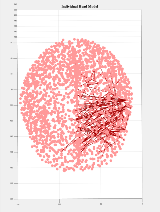High-Density EEG Functional Connectivity in Epileptic Network
Abstract number :
2.203
Submission category :
5. Neuro Imaging / 5B. Functional Imaging
Year :
2018
Submission ID :
502067
Source :
www.aesnet.org
Presentation date :
12/2/2018 4:04:48 PM
Published date :
Nov 5, 2018, 18:00 PM
Authors :
Ching-Chang Kuo, Philips Neuro; Phan Luu, University of Oregon; Don Tucker, University of Oregon; and Lyubomir Zagorchev, Philips Neuro
Rationale: Noninvasive electrical source imaging (ESI) has often provided useful information for irritative zone (IE) and seizure onset zone (SOZ), however, ESI itself may not be sufficient to guide neurosurgical resection or neurostimulation treatments. Recently, epileptic network analysis has been established as a promising tool for epilepsy evaluation. As a result, the characterizing of dynamics within these brain networks can provide complementary information for clinical decision. High-density EEG (HD-EEG) offers exceptional advantages to directly assess dynamic communication in the brain, because of the high temporal resolution by EEG measure and enhanced spatial resolution with the full head coverage. Methods: Patients with focal epilepsy were recorded using HD-EEG (256 channels). Briefly, the onset and development of spikes and seizures were source localized with high-resolution individual head models constructed from the patient’s magnetic resonance image (MRI). The functional connectivity pattern was calculated by source coherence. In particular, functional connections between brain regions with highest of synchronization were identified as the region of interest. The results were comparable to the MRI lesion, intracranial EEG, and surgical outcomes. Results: Five patients with epilepsy were examined and validated using these techniques in this preliminary study. Source localization of the interictal spikes and multiple seizures from each patient were analyzed. Furthermore, the epileptic networks with highest connectivity were laid within the intracranial EEG grids and resected brain region. Conclusions: Precise epileptic network analysis requires HD-EEG and high-resolution individual electrical head models. It is necessary to apply multiple functional mapping techniques to interpret the complexity of epilepsy, and further advance the pre-surgical evaluation and neurostimulation treatment for patients. Funding: None
